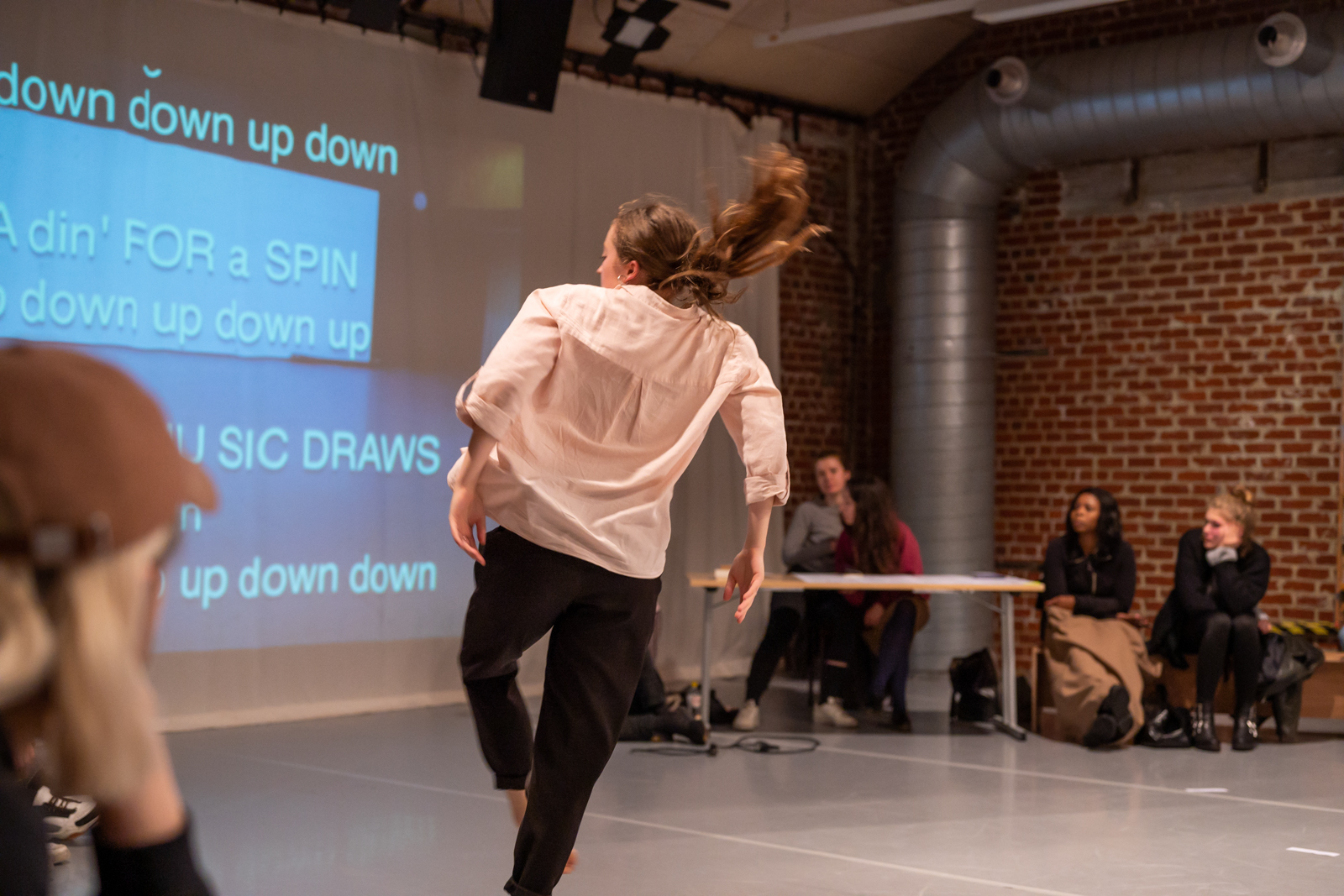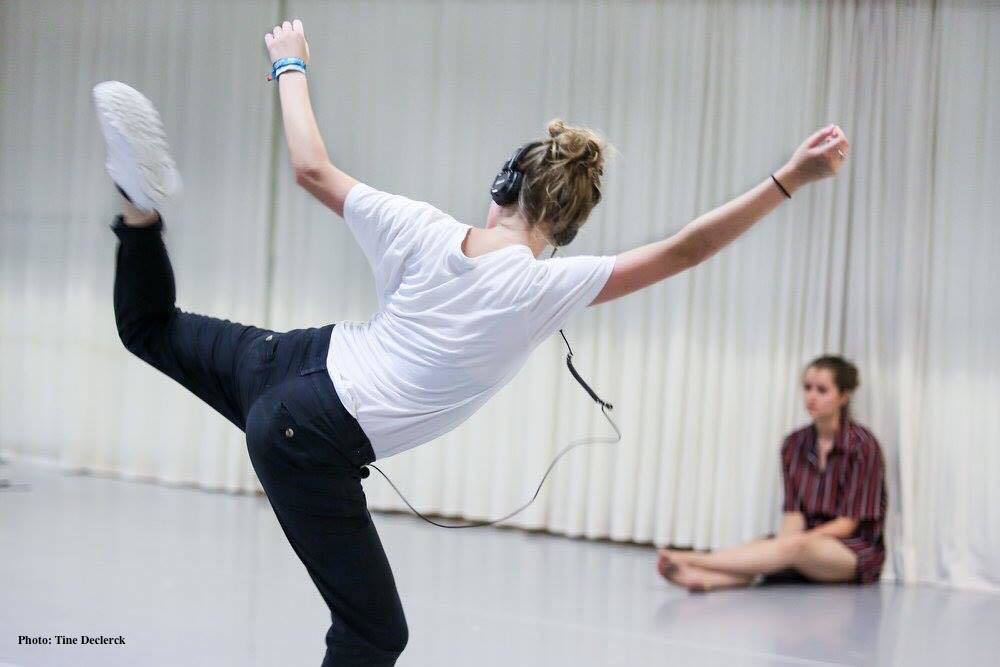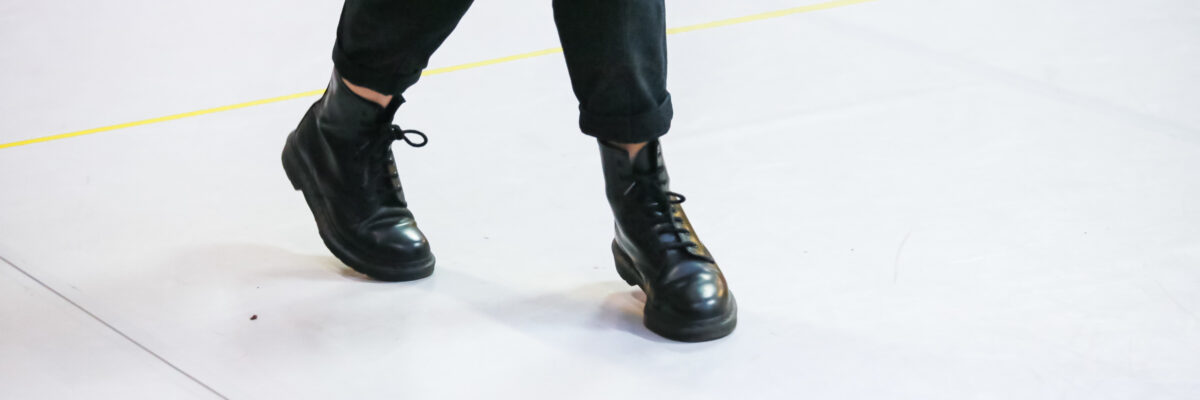18:00- PROGRAMME 1
A Twelve Ton Rose- A Suite of Excerpts adapted for the Dancers of P.A.R.T.S.
Choreography: Trisha Brown
Re-staging: Kathleen Fisher
Music: Anton Webern - Opus 5, movements 4 and 5 for String Quartet, Opus 7 for Piano and Violin, Opus 28 for String Quartet
Dancers: Cassandre Cantillon, Aminata Diallo, Synne Enoksen, Carolina Ferreira, Tessa Hall, Georges Labbat, Eimi Leggett, Jean-Baptiste Portier, Mooni Van Tichel, Mamadou Wague
Twelve Ton Rose (1996) is the second work in Brown’s music cycle, which she initiated in preparation for directing operas. The title is a whimsical play on twelve tone rows, a compositional device developed by Arnold Schoenberg and used extensively by Webern. A series of lush ensemble pieces, duets, and solos, the choreography has a deliberate yet poetic relation to the musical structures. Brown and her company, like Webern, exhibited a profound interest in redefining contrapuntal expressions. Brown noted how the music dissolved in and out and used that as inspiration in her choreography, at times filling the silences and animating stillnesses. With no single set of easily recognisable movement phrases being continually referred to throughout the work, as was often the case in Brown’s prior works, the choreography reflects Webern’s tendency away from a tonal theme and towards abstraction and lyrics.

Abstract Body (external appearance identity, what appears is not what shines)
Performed and choreographed by: Vasco Pedro Mirine
I see this work as a sculpture in which I approach the question of appearance. Appearance is an identity and what shines. It is what appears but it is not the essential.
I’m working with Mozambican traditional dance movements that I transform by using some methods from contemporary techniques. In Abstract Body I use notions of Passing Through (David Zambrano) and western composition/appropriation tools upon the composition of traditional dances from Mozambique. 80% of the piece is without music, exploring the rhythmic body, breathing and the voice.
I’m embodying different characteristics of identity in an abstracted way with the purpose to construct the “spatial sculpture” that is the piece.
Let’s Talk, Seriously
Performed and choreographed by: Stanley Ollivier, Gustavo Gláuber, Huang Mei-Ning and Elliott Harrison
Music: “Ursonate” by Kurt Schwitters
The concept behind 'Ursonate' comes from the meaning of the word ursonate, being original sonate. The musician playing Ursonate represents a person of high esteem giving an important speech. The musician uses non existing language, which leads to an ironic and paradoxical situation. The music is linked to a political moment during World War I. The performers use the political side of music to talk about themes that are still of importance now. How can we find difference while being oppressed by the same power structures? How can we deal with this power? How can we use the ironical approach as a statement?
IN THE BREAK
Blackout Sessions
Organised by: Cassandre Cantillon and Audrey Mérilus
During these sessions we will be experiencing music in darkness, allowing our senses to be heightened in order to dive into a sonic experience. We will be listening to albums of artists in their entirety, from the 1st track to the last one. Prepare yourself for darkness, cosy pillows and a collective musical adventure.
20:45- PROGRAMME 2
H _ _ story
Performed and choreographed by: Tessa Hall
A documentary performance.
This solo is an ongoing research project about the relationship between the documentation of women in historiography and the documentation of choreography. It began in the 1st year at PARTS with a solo based on "The Dinner Party", an installation artwork made by Judy Chicago in the 1970s, that represents 39 women forgotten about in history. Now the project has moved towards a more specific focus on the ideologies and practices of Women's History.

Shuffle (EXTENDED VERSION)
Performed and choreographed by: Judith Van Oeckel
The performed tasks are developed by the dancer, as well as elicited from the audience before the start of the performance. Chance is introduced by responding to the tasks as they randomly come in through the headphones.


